Whether you’ve got a green thumb or not, filling your home with plants is a great way to add a beautiful touch of colour, texture and vibrance to your home. Plus, they have a bunch of other benefits like keeping your indoor air clean.
Whether in pots, containers or hanging baskets, you can choose a range of low-light plants to suit your style. Here’s our ultimate guide on the best indoor plants in Australia.
More...
Finding the Right Indoor Plant
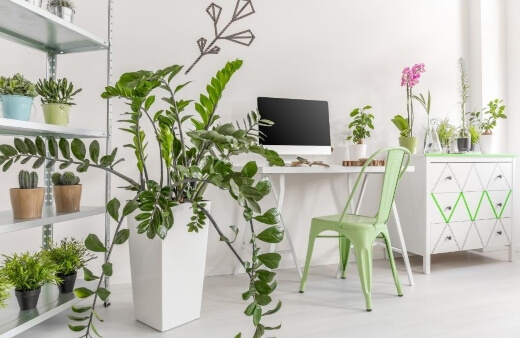
Adding indoor plants to your home aesthetic is nothing new. Whether you’re into gardening or not, filling your home with some gorgeous evergreen or blooming plants is a great way to bring a touch of nature indoors.
So, where does one start when picking the perfect indoor plant?
The first place to start is ensuring that the plant you choose is tolerant of low-light conditions. Unless kept directly on a windowsill, plants which need lots of direct sunlight may struggle indoors.
Luckily, there are a range of tropical and non-tropical plants which easily adapt to low light conditions.
Secondly, you’ll need to consider what function your indoor plant is playing. Are you looking for a bright and exciting feature plant? Do you prefer a tall, growing or trailing plant to add texture and height? Or are you wanting a vivid, evergreen plant to contrast a white wall?
Once you’ve picked out a plant you can also get creative with how you display your plants. There are some incredible options when it comes to conventional plant pots, from colours, textures and shapes. However, you can also consider tall-standing pots, intricate hanging baskets, wall-planters or even terrariums.
If you are into terrariums, see our ultimate guide on how to make terrariums and a list of DIY terrarium kits and ideas.
Best Indoor Plants Australia
Now, there is an incredible range of indoor plants you could choose from, whether trailing, bushy or succulent-type plants. Here is our pick of the 20 best indoor plants in Australia.
1. Pothos

Possibly one of the most popular indoor plants, Pothos is a trailing, air-purifying machine with gorgeous evergreen foliage. Sometimes also called Devil’s Ivy, pothos is considered an absolute, easy-care plant that thrives in some dappled sunlight.
Whether you pop them into a hanging basket or a tall standing pot, be sure to keep your plants well moist throughout the growing season.
2. Philodendron
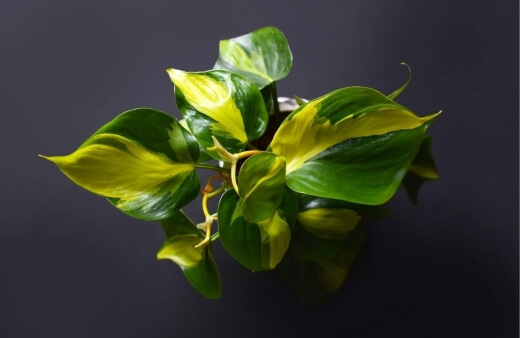
Also stemming from the Araceae family, as the pothos, philodendrons make for amazing, trailing indoor plants. These tropical plants love warm and humid conditions, making them perfect for kitchens, bedrooms and bathrooms. They’re tough to kill and can handle a little neglect from
Although they include over 450 different species, including the Philodendron xanadu dwarf varieties or heart-shaped philodendron, the Philodendron ‘Brasil’ is one of the most popular options. It has striking yellow and green foliage, which appeals to many growers.


Get Your Free Guide:
Master Growing Australian Natives eBook
A Must Have Complete Guide for Every Australian Garden
Get Your Free Guide:
Master Growing Australian Natives eBook
A Must Have Complete Guide for Every Australian Garden
Be an expert in growing Philodendron ‘Brasil’ using our how to grow and care guide.
3. Monstera
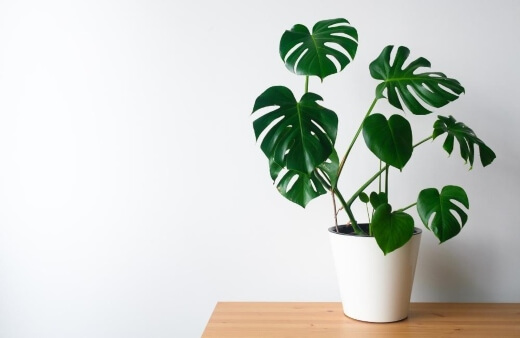
Another common choice when it comes to low light indoor plants in Australia are monstera plants. These cultivars thrive in an indoor environment producing tall growing, gorgeously green leaves that are bound to capture a tropical feel in your home.
These plants love a good amount of dappled light, humidity and some occasional water. Another benefit, they’re incredibly easy to propagate – meaning you can have plenty of little Monstera deliciosa plants throughout your home during the growing season.
4. Chinese Money Plant

If a little extra luck and evergreen foliage is what you’re after, then it’s time to consider the Chinese money plant. These gorgeous, indoor thriving plants are believed to bring good fortune and prosperity to those who grow it.
These plants don’t need too much care apart from occasional watering and some supplementary fertilising through the growing season.
5. Peperomia

There are a range of peperomia plants which make for the ideal indoor companion. These stunning, sub-tropical plants are small growing, with a range of coloured and patterned leaves. Some have rounded, succulent-like leaves and others have larger, variegated leaves.
Perfect for table-tops, shelves and hanging baskets, peperomias don’t require much light and have moderate watering needs. The Peperomia Hope and Watermelon Peperomia are both great options.
Peperomia are considered non-toxic and would also look beautiful near a bird bath.
6. Sansevieria Moonshine
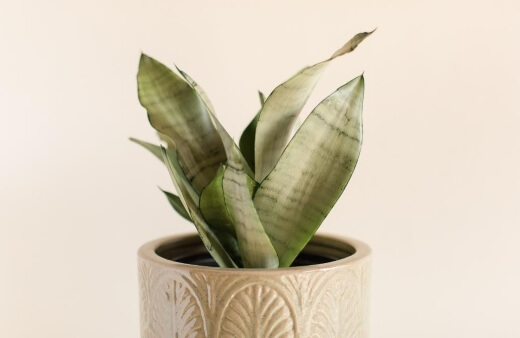
If a tall growing plant is what you’re after, then there’s no better than the sansevieria moonshine. The moonshine snake plant has slim, ‘sharp-tongued’ leaves which grow in an upright manner.
Although stemming from sunny Africa, these plants are perfectly adapted to lower light conditions. Plus, they are known to be one of the finest air purifying plants you can grow indoors.
7. Peace Lily
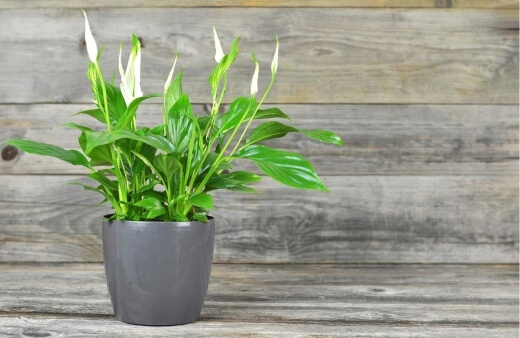
Peace lilies seem to be another fan favourite, with glowing green foliage and brilliant white blooms which appear almost year-round. They’re an ideal choice for beginners, as they require very little effort with a lot of aesthetic appeal.
Generally, these plants need very little light and less humidity than most indoor plants. Pick a spot in your bathroom, bedroom or tabletop for ideal growth.
Here is everything you to know to grow peace lilies in your home.
8. Yucca Plants

Yucca plants are another great choice for beginner growers. These incredibly hardy, tall growing plants are the perfect way to add some height and exciting texture to an indoor space.
These plants are used to drought and heat, which means they won’t need too much attention and care. The most important part of care is that they need sufficient sunlight to thrive, so pick a spot for your Yucca plant that’s near a window for the best results.
Let our yucca plant complete Australian guide help you grow these incredible plants in your home.
9. Bird of Paradise
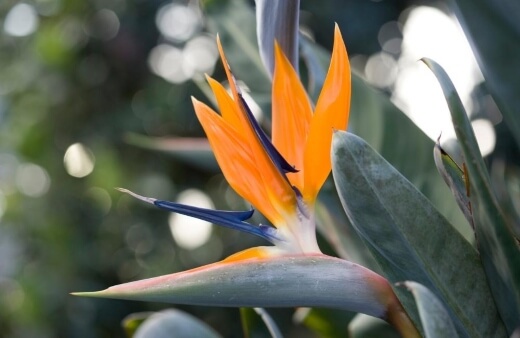
The Bird of Paradise has a lot of appeal, especially when it blooms. However, when growing indoors it is often unlikely for it to bloom. Still, these plants offer fantastic evergreen foliage with big, leathery leaves.
If you’re planning on growing bird of paradise be sure to grow it somewhere where it’ll get enough sunlight throughout the growing season. Don’t worry too much about watering, these plants do best when only watered every 1 to 2 weeks.
10. Alocasia

Also known as the African Mask Plant, these subtropical Asian plants are perfect for indoor growth. There are a range of alocasia plants you can choose from with a range of interesting foliage.
Easy to propagate and easy to grow, be sure to grow your alocasia in a spot that gets plenty of indirect light. Give your plants a good soak from time to time, but make sure that the soil drains well.
Learn how to grow Alocasia both indoors and out using our Australian growing guide.
11. Fiddle Leaf Fig

Another popular tall growing plant, the fiddle leaf fig is evergreen and striking with wonderful large leaves. In the right spot, your fiddle leaf fig will thrive and grow incredibly quickly.
Be sure to choose a rich, loam-based potting mixture, supplementing with some added humidity from time to time for optimal results. Learn how to grow fiddle leaf fig here.
12. Birds Nest Ferns
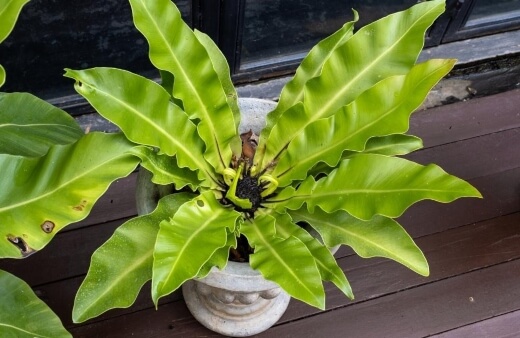
If a bathroom plant is what you’re after there are few better than the bird's nest fern. Extremely adaptable to low light conditions, the bird's nest fern favours warm and humid environments.
Keep your watering consistent and ensure a moisture-rich, nutrient rich potting mixture. If not growing in a humid environment, you can always supplement some additional moisture by placing them on a pebble tray or misting from time to time.
Don't miss our bird's nest fern grow and care guide here.
13. Golden Cane Palm

Adding a holiday, coastal flare to your home is made easy with the golden cane palm. This tall growing plant produces a wealth of thin-fronded leaves that create a luscious appeal and beachy feel.
Ideal for the beginner grower, these plants thrive when placed in the right spot. Be sure to give sufficient daily sunlight and avoid areas that experience major drafts.
Take a look at our golden cane palm growing guide to learn more.
14. Bromeliad
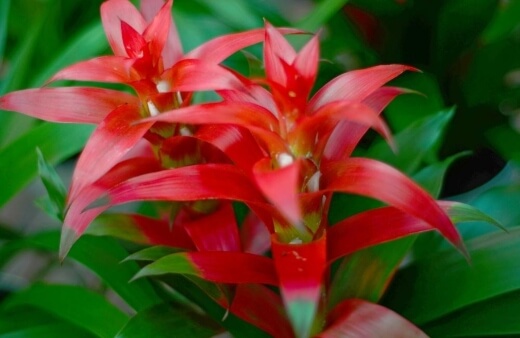
Although these plants may seem intimidating, they’re actually a fairly easily cared for indoor plant. With over 3000 different varieties, each with their own exciting flowering type, they’re non-fussy plants that produce quite rapidly.
Bromeliads can be grown in soil, over rocks or even as an air-borne epiphyte. Whichever way you decide to grow yours, be sure to keep them in a warm, sheltered spot that receives enough, medium light.
Check out our Bromeliad growing guide for everything you need to know.
15. Zanzibar Gem

The Zanzibar gem is great for adding an evergreen texture to your interiors. They need little sunlight and relatively little maintenance too. Plus, these plants often last a lifetime.
Be sure to pick a well-draining potting medium and avoid overwatering which can cause root rot issues. They won’t need any particular potting mixture.
See our Zanzibar gem growing guide here.
16. Rubber Tree
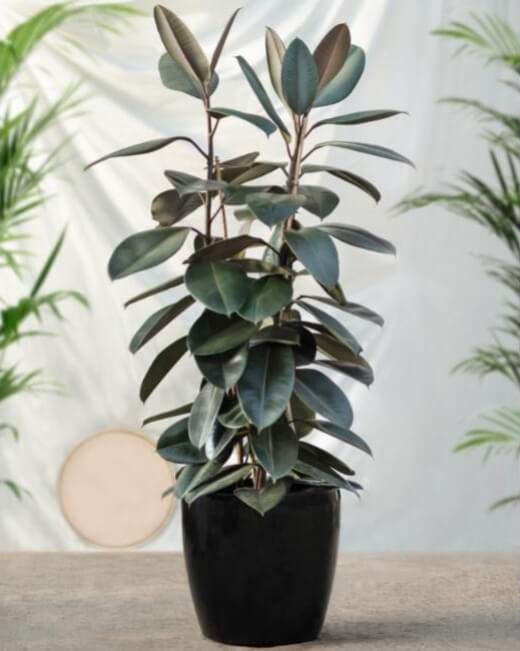
If you’re looking for something different from the evergreen plants, it’s time to consider the rubber tree. This is an extremely leafy plant, with bold, dark red leaves – perfect to strike some contrast.
These plants do need plenty of light and don’t enjoy being cramped.
17. African Violet

The African Violet is a plant that is prized for its gorgeous flowers. Although flowering plants usually struggle growing indoors, flourish indoors when kept in bright, indirect light.
They’re quite easy to care for, needing only a good moist soil mixture and occasional fertiliser to thrive. Here's everything you need to know to grow African violets in your home.
18. Anthurium
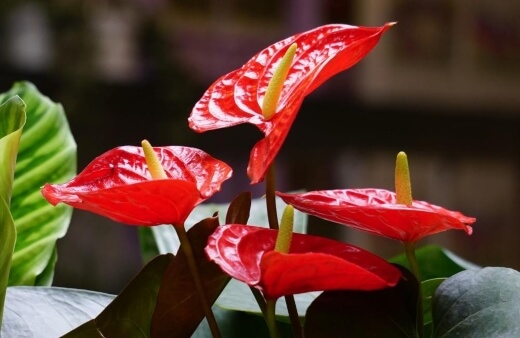
Anthuriums have become an indoor staple over recent years. These plants produce heart shaped leaves and waxy blooms that come in a range of colours. The flowers have a long stamen which contrasts against the rest of the petal.
They’re neither high nor low maintenance but the little bit of effort they require is well worth it.
19. Herb Plants

There’s no better way to add a touch of green to your kitchen than a beautiful, functional herb garden in your kitchen. Herbs can be quite delicate plants and many of them are well-suited to grow indoors. Meaning you can just cut and cook as you want.
Be sure to keep your herb garden in the right spots, as most plants will require some direct, bright light.
20. Succulents
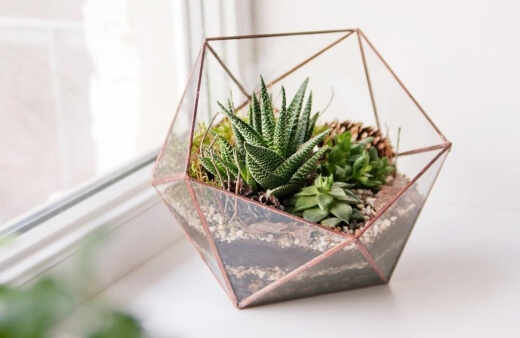
Succulents have to be an absolute indoor staple. There is an incredible variety of succulents to choose from, in every shape, colour and size. These plants are used to dry and arid conditions which means they handle all kinds of neglect.
They can be grown on their own, in a terrarium with a mix of other succulents or in a shallow table-top planter.
Tips for Growing Indoor Plants in Australia
Although many of the above-mentioned plants are incredibly adaptable, it’s important to pay extra attention to certain growing conditions they need to thrive.
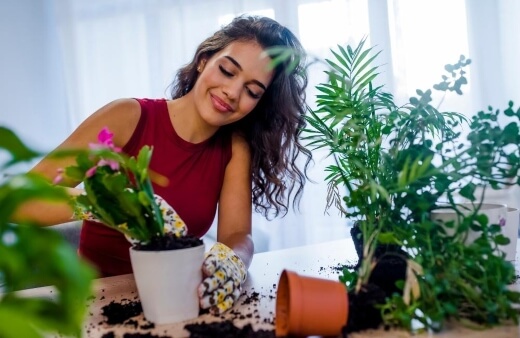
Potting Soil
Depending on which plants you are choosing to grow, they’ll either need moist or dry soils, which all drain well. Waterlogged soil is always a recipe for disaster, so it’s always a good idea to pick the right kind of potting medium and refresh it regularly.
If you are looking for a drier, faster draining soil mixture, consider mixing perlite into the soil. If you need something which retains more moisture, mix in some coconut coir or vermiculite.
Fertilising Indoor Plants
Most often a liquid fertiliser is the best option for indoor plants. Liquid fertilisers have an easier time of penetrating deep into the soils and make it easier for the roots to absorb the nutrients.
While many growers say fertilising every 6 months will suffice, for optimal results you can do it as often as 3 times per year. Avoid fertilising during the winter. Ideal fertilisation times would be at the end of winter, mid-spring and early summer.
This will give your plants the nutritional boost they need for the following growing season.
Pruning
Some indoor plants will require pruning, but it won’t be as often as most outdoor plants. Ideally, you’ll want to restrict your pruning to cutting away dead leaves, damaged foliage and spent flowers.
Ensure you use a sharp, clean pair of shears to avoid spreading any forms of disease. Here is our review on the best pruning shears/secateurs for 2024.
Humidity
Humidity is often the biggest struggle for indoor plants. Unless you’re keeping your plants in the bathroom, giving them the right level of humidity can be a bit of a challenge.
Consider keeping your plants on a pebble tray or mulching the soil regularly to help keep the level of humidity. Misting plants or placing them near a humidifier is also a great idea.
Be sure to check out our growing light product reviews and buying guide to help you in growing plants indoors.
Benefits of Growing Indoor Plants
Now growing indoor plants isn’t just a great way to bring some greenery into your home. Growing indoor plants can also:

Improve Your Air Quality
Many indoor plants are known to draw harmful toxins and carbon dioxide from the air throughout the day and night, keeping your air clean and fresh to breathe.
Certain plants, like the sansevieria moonshine have been proven to remove Volatile organic compounds from the air, as well as an air filter would.
Noise Reduction
Rooms that are filled with plants often seem far quieter than empty rooms. This is because plants absorb sound waves and decrease the echo. Keeping plants near large windows can help to diminish outside noise.
Reducing Sick Building Syndrome
For those of you scratching your head at this term, Sick Building Syndrome (SBS) is basically a theory that generally healthy occupants of a 'sick' building can suffer some pretty bad health and comfort issues, that seem to be directly linked to time spent inside that building. It is thought that these issues are caused by poor ventilation, air pollution and contaminants.
There's also debate whether workplace satisfaction and workplace stress are also contributing factors to SBS. By using indoor plants, SBS can be reduced by clearing the air of contaminants, improving air quality, and increasing the aesthetic appearance of the area, making it a happier place to be and hopefully reducing stress!
Indoor Plants Frequently Asked Questions
What is the best indoor plant?
Devil’s Ivy is one of the most stunning and underrated plants to grow indoors. For me, devil’s ivy is the best indoor plant you can grow in Australia, with luscious foliage, minimal care, and huge rewards, as well as mild air purifying qualities, and architectural impact.
What is the best air purifying indoor plant?
English ivy and spider plants are easy to grow, and very effective air purifiers. English ivy helps to reduce dust in any space by up to 50%, which is pretty incredible, especially in older homes.
Spider plants are great at reducing toxins in the air, and can remove up to 95% of toxins from a sealed room in just 24 hours.
What is the most popular indoor plant?
Peace lily is probably the most popular indoor plant in the world, and is commonly given as a housewarming gift in most countries thanks to its long lifespan (up to fifty years) and simple propagation.
These tough plants have delicate flowers, and sturdy foliage, and work best near a door or window where they benefit from occasional air flow.
What is the prettiest indoor plant?
I don’t think plants get much prettier than calathea, so I’d have to say that calathea (prayer plants) are the prettiest plants, but I am biassed as a keen collector and love seeing them lit up like stained glass in the morning, and early evening, just before their leaves begin to twitch and curl up for the night.
What is the easiest indoor plant to keep alive?
Spider plants are virtually indestructible. We once moved a spider plant pup into the garage, with no light, and cold temperatures over winter, because we forgot it was in the box.
In spring, the plant was still alive, and had survived in a virtually light-free environment with no water for well over two months!
What houseplants are the best for beginners?
Always start small with new hobbies. With house plants, that means avoiding climbing or trailing plants, which might be easy to keep, but are a big space commitment when they mature.
Start with easy-to-grow pot plants like snake plants or peace lilies. They’re easy to keep alive and add structural interest to rooms.
What indoor plants should be grown outside?
One common problem with Australia’s horticultural market is that outdoor plants can be sold as houseplants, simply due to international fashions, but our mixed climate means that many tropical house plants will actually grow better outdoors!
Should you put houseplants in your bedroom?
I’ve read so many articles over the years, with advice to indoor gardeners against houseplants in the bedroom. All of them are based on one piece of misinformation about plants absorbing oxygen and releasing carbon dioxide – THIS IS NOT TRUE.
Plants do the opposite, and are incredibly beneficial in any bedroom.
What houseplants are good for bathrooms?
Spider plants, devils ivy, air plants, and bromeliads work wonderfully in bathrooms, where the high humidity, and occasional shower splashes help to water their foliage, and increase humidity.
Bathrooms also tend to be reasonably bright, and along the side of the house in most cases this will be east or west facing, so they get bright but indirect light, which is ideal for many tropical forest plants.
Do you need to dust houseplants?
Houseplants, especially climbing plants, can gather dust rapidly. This is good for keeping dust down in the rest of the home but bad for your plants. Clean them with a dust cloth, wet tissue, or a feather duster to keep them looking their best.
How often should you water your houseplants?
Knowing how often to water your houseplants isn’t straightforward. Every plant has different needs, but it’s worth remembering – you’re more likely to kill a plant with too much water than too little.
A dry plant will wilt but revive when watered, a damp, waterlogged plant can rot at its roots, and may not recover.
How many houseplants offset one human breathing?
One human being, breathing out carbon dioxide would need 700-1000 houseplants to completely offset their breathing in a sealed room. In reality that’s impossible in most homes (we’ve got 200 house plants, and it’s a struggle to fit them anywhere).
Houseplants should be treated as a garden, and their benefits celebrated, rather than tested. Open some windows to support them and reduce the strain on your plants.
Start Growing Indoor Plants Today!
If you are into crocheting, then you don't want to miss these crochet plant patterns you can also add to your indoor space. Now is the time to start growing indoor plants in Australia.
Whichever you consider the best indoor plants, you’ll be guaranteed to have gorgeous growers which will add colour, texture and excitement to your home.
Before you start growing your plant of choice, take the time to look over our ultimate growing guides – giving you everything you need so your indoor plants will thrive in your home.
Published on January 8, 2023 by Lorri Hopkins
Last Updated on October 1, 2024




